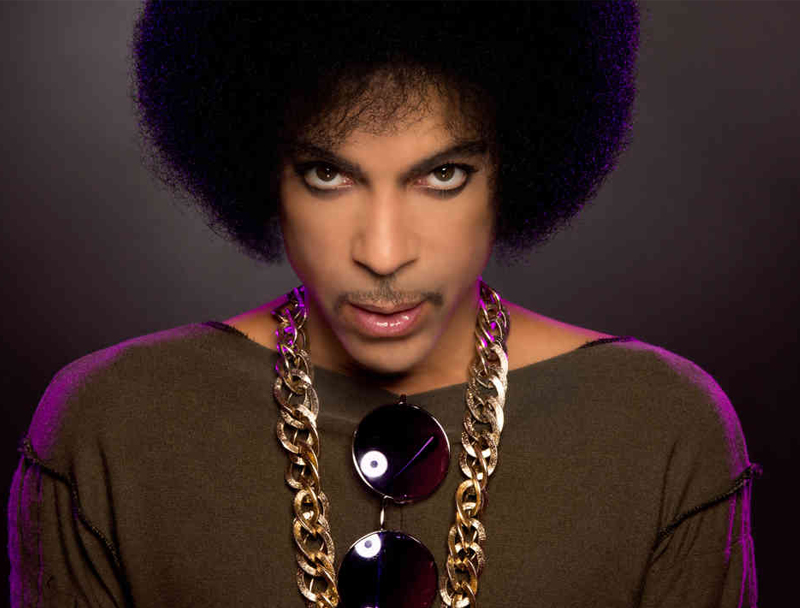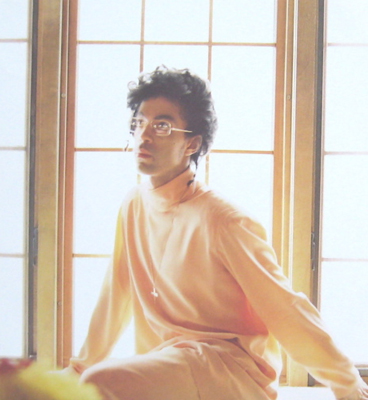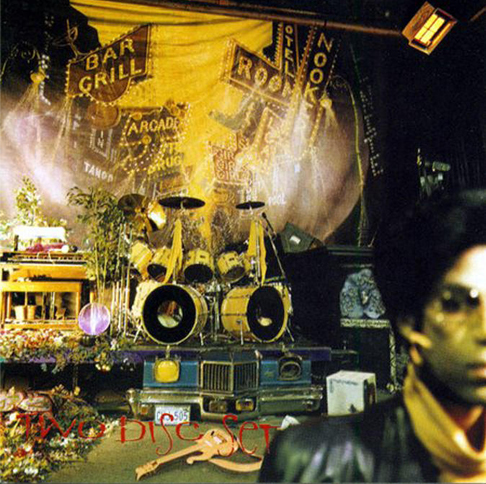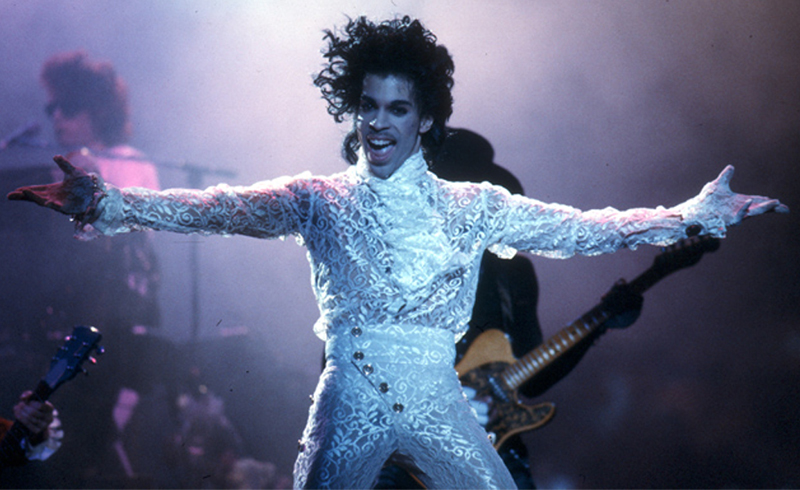There is no question that Prince was one of the most provocative artists we have ever seen, but he was so much more than that. He was a prolific and prodigious songwriter. He had a gift for indelible, irresistible and infectious grooves, but it was the versatility of his work that has always impressed me. With disparate influences ranging from James Brown to Joni Mitchell, Prince tapped into a variety of musical styles on many of his albums. Hell, more often than not, Prince incorporated elements of different genres into individual songs, switching gears on a dime but always staying true to the essence of the song. Armed with an underrated vocal range and the ability to play multiple instruments, he brought an eclectic elasticity to his music. During his true purple reign (Sign O’ The Times, The Black Album, Lovesexy), Prince struck me as a true jazz musician who used conventional forms of music in unconventional ways. Not only did Prince encourage me to dig deeper into his influences and other genres I wasn’t as familiar with back in the 1980s, the quality of his music encouraged me to seek out other artists who weren’t afraid to work outside of narrow genre constraints.
My introduction to Prince came through “Little Red Corvette,” the first video I ever saw on MTV. I was 13 at the time. In some ways, the song was also my introduction to quality pop music. Granted, equating fast cars with fast women wasn’t exactly a groundbreaking use of metaphors. However, there was a vitality about this song with the opening serene synth sheen shifting into more of a carnival-esque flavor to complement the rock guitar charge of the chorus, and a playfulness with the vocals that illuminated the mixture of apprehension and excitement of a liaison with a more experienced woman. And who else but Prince could sneak in a line about condoms into his first top 10 hit? It was the perfect introduction to the artist as both a hit maker and songwriter.

Purple Rain was all over the radio the summer of 1984 and the film made its rounds on cable TV the following summer. I became a Prince fan and started to explore his previous albums. In the 1980s and into the early 1990s, I was at the record store (or “wrecka stow” for those in the know) every Tuesday that a new Prince album was released. I read music magazines frequently looking for any news of new Prince music, whether it was his own albums or songs he wrote and/or produced for other artists. I remember buying the “Bright Lights, Big City” soundtrack just because it had a previously unreleased Prince song (“Good Love”) on it. I rented and re-rented the VHS tape of the Sign O’ The Times concert film many times when I was in high school. (Warner Brothers, it is way past time to make a DVD of this film available in the U.S.) I was likely one of the few people in America to see Graffiti Bridge in a theater (yes, on the day it was released).
I started writing music reviews in high school and continued to write about music into my early thirties. I frequently wrote about Prince or artists affiliated with Prince in one way or another. It got to a point where my friends at the college newspaper got me a rather large, provocative poster of Prince as a gag gift. One of the girls in my dorm freshman year asked me to put together a CD of Prince “mood music” for her. No problem. A few months later, when I was hobbling around campus on crutches after badly spraining my ankle in a pickup football game, I ran into that girl. When she saw me on crutches, she asked if it was “Prince-related.” I looked at her quizzically for a second and then laughed when she explained, “We all know Prince can make us try moves our bodies aren’t accustomed to doing.”
She had a point. You can’t really sit still listening to Prince. Even the most dance-inhibited among us can’t resist the funky grooves of songs like “Housequake,” “Sexy M.F.,” “D.M.S.R.,” “Hot Thing,” and “Girls and Boys,” not to mention the hits, which Prince delivered in abundance. “Raspberry Beret.” “1999.” “7.” “Alphabet St.” “Diamonds And Pearls.” “Delirious.” “Kiss.” “Let’s Go Crazy.” “Pop Life.” “U Got The Look.” “Musicology.” “Cream.” Prince was insanely prolific. From 1978 to 2016, he released 39 albums, averaging slightly more than an album a year. I’m not saying there was consistent quality throughout but try to think of another artist who could manage this kind of output.

Then consider the bevy of affiliated acts (The Time, Sheila E, Vanity 6, Madhouse, etc.) that he wrote for, produced or collaborated with. Using odd pseudonyms like Joey Coco and Alexander Nevermind, Prince also wrote songs for a variety of artists ranging from Miles Davis, Sheena Easton and the Bangles to Patti LaBelle, Mavis Staples and Kenny Rogers. That driving synthesizer you hear on Stevie Nicks’ “Stand Back”? That’s Prince. That wail of guitar distortion at the beginning of Madonna’s “Like A Prayer”? That’s Prince. Who did Bonnie Raitt record with before she made her career comeback album Nick of Time? Prince. Who wrote Sinead O’Connor’s breakout hit “Nothing Compares 2 U”? Prince. What about that unyielding guitar sample that helps propel Public Enemy’s “Brothers Gonna Work It Out”? That’s Prince (from “Let’s Go Crazy”).
Prince took chances and seemingly defied conventional thinking at every turn. On the day of final mixing, Prince decided to remove the bass from “When Doves Cry,” the lead single from the soundtrack and film that launched his career into another orbit. Not wanting even a sliver of temptation to do Purple Rain 2, Prince reportedly recorded his 1985 follow-up album Around the World in a Day shortly after rehearsals for the Purple Rain tour and released the album less than a year after Purple Rain. In addition to posing nude on the cover of Lovesexy, Prince originally had the CD banded to be played as one continuous piece of music with no song breaks. In a story from Dave Hill’s 1989 biography, Prince: A Pop Life, Prince was reportedly invited to share lead vocals on the title track to Michael Jackson’s Bad. Hill noted that producer Quincy Jones hoped that Prince’s involvement would help Jackson shake free of his “creative inhibitions.” Prince wisely declined. I think Prince saw “Bad” for what it was: a forced attempt to garner street cred amid the rise of hip-hop.
If there were any perceived boundaries on sex in popular music, Prince obliterated them with songs like “Gett Off,” “Do Me, Baby,” “Let’s Pretend We’re Married,” “Jack U Off,” “Darling Nikki,” and “Temptation.” Consider this stanza from one of his classic B-sides, “Erotic City.” “Every time I comb my hair/thoughts of u get in my eyes/You’re a sinner and I don’t care/I just want your creamy thighs.” But it wasn’t always about bravado and hot pursuit. There’s the quirky vulnerability of the bashful lover from “The Ballad Of Dorothy Parker” who initially keeps his pants on in the tub because he’s kind of cold when he’s with someone. Prince initially seeks a different kind of intimacy, the elusive closeness of a best friend on “If I Was Your Girlfriend”: “Would U remember to tell me all the things U forgot when I was your man?”
Prince challenged perceptions of identity in his work. “People call me rude/I wish we all were nude/I wish there was no black and white/I wish there were no rules,” he sang over the strident, pulsating groove of “Controversy” in 1981. “I’m not a woman. I’m not a man. I am something that U will never understand,” he declared on “I Will Die 4 U”. On the wildly eclectic “Lovesexy,” he played around with voice modulation and offered this stanza: “You got me drippin’/Drippin’ all over the floor/If I come back as a woman, / I want a body like yours.”
There was also a sense of humor in one form or another in Prince’s music. On the steamy “International Lover,” Prince advised, “In the case of over-excitement, your seat cushion can be used as a flotation device.” There are the self-depreciating lines from the Black Album‘s “Bob George”: “What’s he do for a living? Manage rock stars? Who? Prince? That skinny motherfucker with the high voice? Please.” Then there’s the line from “Gett Off” that always makes me laugh: “Tonight, you’re a star and I’m a big dipper.”
 Prince’s music was not overtly political, but there were some inspired moments in his career. While the Reagan administration showed little more than callous indifference to the early years of the AIDS epidemic in the 1980s, Prince opened up “Sign O’ The Times” with this stanza: “In France, a skinny man died of a big disease with a little name/By chance, his girlfriend came across a needle and soon she did the same.” On the fervently anti-war “Live for Love,” Prince’s riveting guitar work helped illustrate a crisis of conscience for a bomber pilot on his last mission. “Peace is more than the absence of war,” he sang on “Baltimore,” an eclectic protest against police brutality released shortly after the death of Freddie Gray in Baltimore last year.
Prince’s music was not overtly political, but there were some inspired moments in his career. While the Reagan administration showed little more than callous indifference to the early years of the AIDS epidemic in the 1980s, Prince opened up “Sign O’ The Times” with this stanza: “In France, a skinny man died of a big disease with a little name/By chance, his girlfriend came across a needle and soon she did the same.” On the fervently anti-war “Live for Love,” Prince’s riveting guitar work helped illustrate a crisis of conscience for a bomber pilot on his last mission. “Peace is more than the absence of war,” he sang on “Baltimore,” an eclectic protest against police brutality released shortly after the death of Freddie Gray in Baltimore last year.
Spirituality has also been a cornerstone of Prince’s oeuvre. “The Ladder” offers a churchy wisdom delivered with a quiet steadiness, conveying a recognition in tone and lyric that this thing called life at times requires a certain perseverance and faith to see you through. Prince delivered soul-stirring gospel with “Still Would Stand All Time” and a rousing devotional anthem with “The Cross.” Perhaps one of his most powerful songs is the haunting “Anna Stesia,” which evolves from a dark despair into a spiritual awakening. The song begins with pensive piano chords in isolation and adds mournful, distant guitar calls. Then there is a gradual building of keyboard flourishes and frenetic guitar that swell into a crescendo and ultimately a celebratory revelation calling on listeners to embrace a higher power.
Prince could also be a very gifted interpreter of songs by other artists. While more than a few folks have attempted to cover the classic Bonnie Raitt torch song “I Can’t Make You Love Me,” he delivered an achingly soulful rendition on Emancipation. On that same triple album, he reinvented Joan Osborne’s “One of Us” as a rock guitar classic and re-imagined the Stylistics’ “Betcha By Golly Wow” as a soaring ballad with an elastic falsetto vocal. Then there is the moving solo piano cover of David Bowie’s “Heroes” Prince performed a week before his death.
In talking about Prince, one would be remiss not to consider the level of musicianship he brought to the table. When he was inducted into the Rock and Roll Hall of Fame back in 2004, he delivered virtuoso guitar work during the all-star jam on George Harrison’s “While My Guitar Gently Weeps”. What about “Sexy M.F.”? Fueled by chunky bass lines and an exhilarating horn section, this James Brownian roster call of individual solos and extended vamps is pure funk literature. Talking about Prince’s abilities as a multi-instrumentalist isn’t quite the same as seeing it in action. Check out Prince taking over on drums while Sheila E. takes the mike for a rap on “It’s Gonna Be a Beautiful Night”.

After walking on to the stage with a cane to present Best Album at the Grammys in 2015 (and getting a standing ovation before speaking), he noted: “Albums still matter. Like books and black lives, albums still matter. Tonight and always.” For me, the album that has always mattered is Sign O’ The Times, the quintessential Prince album. Funky tracks like “Housequake” and “Hot Thing” are side by side with a horn-peppered ballad like “Slow Love.” Songs like “The Ballad of Dorothy Parker,” “Starfish and Coffee” and “If I Was Your Girlfriend” provide examples of Prince’s gift as an eclectic storyteller while “Play In the Sunshine” and “It’s Gonna Be a Beautiful Night” are festive invitations to dance and party. However, the prevailing theme woven into the fabric of this double album is commitment, whether it’s refraining from a one-night stand on “I Could Never Take the Place of Your Man,” the spiritual enlightenment of “The Cross” or the unbridled devotion of “Forever In My Life” and “Adore.”
Prince was a master showman and I was lucky enough to see him live four times. My first Prince show was back in 1988 with the Lovesexy tour at the Spectrum in Philly. That Sign O’ The Times/Lovesexy-era band was amazing, with Sheila E. on drums, Eric Leeds on sax, Levi Seacer, Jr. on bass, Matt Blistan (“Atlanta Bliss”) on trumpet, keyboardist and vocalist Boni Boyer, and vocalist/dancer extraordinaire Cat. Prince and his cohorts played for nearly three hours that night and performed 38 songs including an opening quartet of “Erotic City, “Housequake,” “Slow Love” and “Adore.”

In 1997, Prince kicked off a brief 14-city benefit tour for charities for underprivileged children at the Tower Theater in Upper Darby, Pa. He got there a bit late so folks had to stay outside in bone-chilling weather (this was early January) until he went through his soundcheck for the show. There was some grumbling outside but no one was leaving. This was an opportunity to see a Prince show at a smaller venue (just over 3,000 capacity) and when was that going to happen again? It wound up starting around 11 p.m. and Prince didn’t disappoint. His fiery fretwork sparked a mesmerizing rendition of “Purple Rain.” He tore into the raw funk number “Face Down” with a vengeance. He broke off “The Most Beautiful Girl in the World” mid-song to elicit more audience response and then resumed with silky singing and quirky piano playing. The full-fledged electric rock testifying of “The Cross” merged into an amazing cover of the aforementioned “One of Us.” Playing to the diehards throughout the night, Prince revisited the lighthearted pop of “17 Days” and delivered a stellar rendition of his classic B-side piano ballad, “How Come U Don’t Call Me Anymore.”
Of course, there were memorable live performances on television ranging from Prince’s combo of “Sign O’ The Times” and “Play In The Sunshine” to open up the 1987 MTV Video Music Awards to his 1991 takeover of The Arsenio Hall Show, where his incredible dance moves were on full display. And who could forget that amazing halftime show at the Super Bowl in 2007? In addition to spirited performances of “Let’s Go Crazy,” “Baby I’m A Star” and “Purple Rain,” Prince referenced Ike and Tina Turner’s take on Creedence Clearwater Revival’s “Proud Mary,” nodded to Jimi Hendrix’s rendition of Bob Dylan’s “All Along The Watchtower” and offered a commanding version of the Foo Fighters’ “Best Of You.”
 Still, I think one of my favorite Prince performances is the combination of “Forever In My Life” and “It” from the Sign O’ The Times concert film. Here you see Prince on acoustic guitar going back to church, so to speak, and eventually testifying (with a patented scream or two) as he implores his lover: “I gotta tell you what U mean 2 me.” As a former cynical music critic, there were only a few times that I got chills listening to music. This is one of them.
Still, I think one of my favorite Prince performances is the combination of “Forever In My Life” and “It” from the Sign O’ The Times concert film. Here you see Prince on acoustic guitar going back to church, so to speak, and eventually testifying (with a patented scream or two) as he implores his lover: “I gotta tell you what U mean 2 me.” As a former cynical music critic, there were only a few times that I got chills listening to music. This is one of them.
Through his music and his artistry, Prince elevated our spirits, routinely compelled us to dance, and helped open our ears, our minds and our hearts. Will we ever see another artist with that kind of talent, genre-hopping abilities, prolific songwriting and limber dance moves? In “Pop Life,” Prince sang, “We all have a space to fill” but it is hard to imagine another artist filling this considerable void anytime soon.





Comments